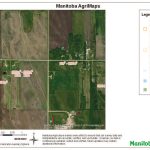
News

20th anniversary reflections on BSE
The cattle sector looks back on the crisis that rocked the industry, and the profound changes that followed

Fertilizer industry commends CFIA extension
Applicable businesses will have longer to get their labels in line with new framework

Don’t forget about heat safety
Having that water bottle on hand might not be a terrible idea on days where the humidex rises

Making use of soil surveys
How to understand your soil from the bottom up

California animal housing law spells trouble for local trade
Prop 12 stipulates out-of-state farms must meet specific housing standards to sell in California -- and Canadian regulations may not meet them

Province pledges $224 million to park renewal
The 10-year project includes road rehab around provincial parks

European organics ponder gene-editing coexistence
Unlike their Canadian counterparts, organic farmers across the pond haven’t contended with GMO crops at scale

Finding sweet spot for soybean seeding
Things to consider this year when planting soybeans

Nature-based solutions can shore up crumbling water infrastructure: IISD
‘Natural infrastructure’ is cheaper and comes with many additional benefits, a new report says

Prices fairly strong, traffic in decline
Smaller head counts make it more difficult to fill trucks


